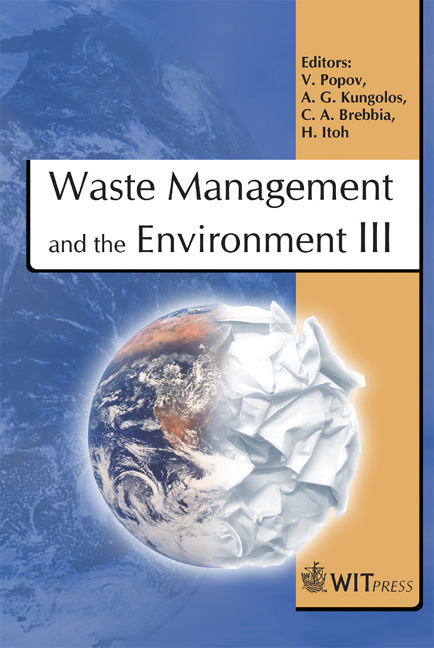A Methodology For The Optimal Siting Of Municipal Waste Landfills Aided By Geographical Information Systems
Price
Free (open access)
Transaction
Volume
92
Pages
12
Published
2006
Size
1,215 kb
Paper DOI
10.2495/WM060371
Copyright
WIT Press
Author(s)
M. Zamorano, A. Grindlay, A. Hurtado, E. Molero & A. Ramos
Abstract
An inappropriate landfill site may have negative environmental, economic or ecological impacts. Landfill siting should therefore consider a wide range of territorial and legal factors to reduce such negative impacts as far as possible. This paper describes the application of an integrated system of landfill siting methodology. The methodology incorporates techniques from various scientific fields as well as GIS (Geographical Information Systems) to generate spatial data for the evaluation of the suitability of an area for optimal landfill siting. The resulting land suitability is reflected on a graded scale with several territorial indexes indicating the risk and probability of contamination for five environmental components: surface water, groundwater, atmosphere, soil and human health. The methodology has been applied to a site in Granada (Southern Spain). Keywords: landfill siting, municipal waste landfill, Geographical Information Systems, territorial siting criteria, waste management. 1 Introduction Although authorities are attempting to reduce waste generation and disposal by implementing recycling programs and new facilities, the sanitary landfill remains a necessary part of the municipal waste management system [1, 2, 3].
Keywords
landfill siting, municipal waste landfill, Geographical Information Systems, territorial siting criteria, waste management.





